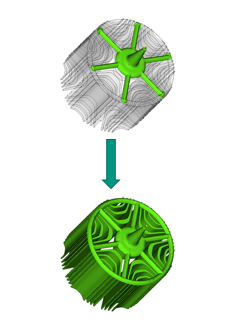
ReMos - Effective Reluctance Machine for Emission-free Mobility without Rare Earths
- Contact:
Prof. Dr.-Ing. Martin Doppelbauer
- Project Group:
Hybrid Electrical Vehicles
- Funding:
InnovationsCampus Mobilität der Zukunft
Total project funding: ~ 300.000 €
- Partner:
Institut für Technische und Numerische Mechanik Universität Stuttgart
Institut für Fahrzeugsystemtechnik (FAST) - KIT
- Startdate: 01.08.2020
- Enddate:
31.12.2021
Objectives and Results
The increasing prices and uncertainties in the acquisition of rare earth materials for the production of magnets create an urge to search for alternatives to the commonly used permanent magnet synchronous machines (PSM) used in traction drives for battery electric vehicles. In the course of a publicly funded research project the ETI works in collaboration with the FAST, experts in the field of lightweight design, and the ITM of the University Stuttgart, who lend their expertise for the investigation of the NVH-behaviour, to design a novel, permanent-magnet assisted variable-flux synchronous reluctance machine (SynRM).
As opposed to PSMs there is usually no rotor excitation in SynRMs which leads to a lower power factor and comparatively low efficiencies. By adding AlNiCo magnets to the rotor the power factor increases and so does the efficiency. The low coercive field of these magnets allows the control of their magnetisation level while the motor is running. This way it is possible to utilise the permanent magnet flux for high torques at low speeds and reduce the flux for an efficient field weakening at higher speeds. The required mechanical sturdiness of the rotor is ensured by using fibre-reinforced plastic with the same magnetic properties as air to fill the flux barriers. That way high speeds of up to 20,000 rpm are possible.
Content and Approach
An analytical model to describe the torque characteristics of the machine is developed based on the winding function and the rotor geometry. This model is coupled with a mechanical model to calculate the bearing loads. The effect of the permanent magnets on the torque production of the machine is investigated and an appropriate amount of magnets is inserted in the rotor. There is a constant exchange with the lightweight-experts from FAST and the NVH-experts from ITM to enable an integral development process to minimise design iterations and enable an extensive understanding of the physical and technical interactions between the fields of electromagnetic design, manufacturing and mechanical transmission paths. To achieve even higher efficiencies a slot cooling is used and the motor is built using an integral plastic housing.
